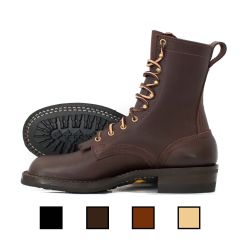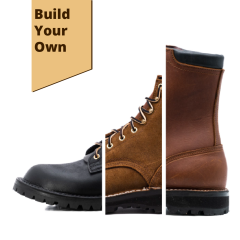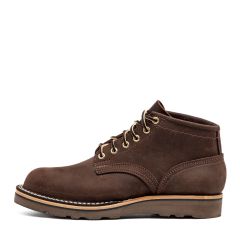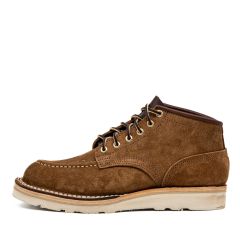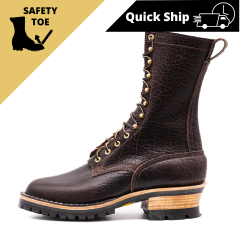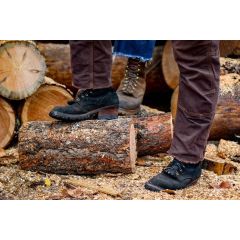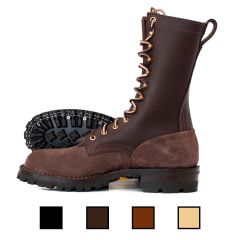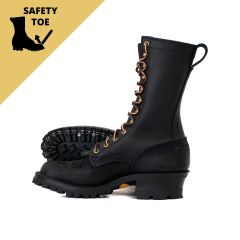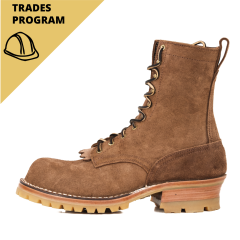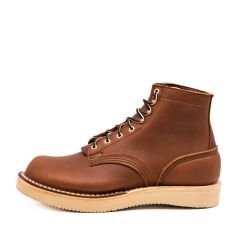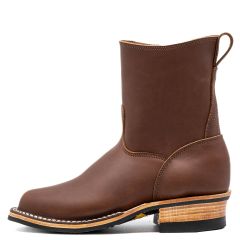Work Boots For Welding
Importance Of Work Boots For Welding
Protection
Welding boots are crafted with fire-resistant and melt-proof materials, essential for anyone working around sparks and intense heat. They often include safety features such as steel toes or composite materials for added protection against impact and compression. This protective barrier minimizes the risk of burns and injuries, ensuring welders can concentrate on their tasks without worrying about their feet.
Durability
Quality welding boots are known for their durability. They are made to withstand the rigors of tough working conditions and resist damage from abrasions, cuts, and punctures. Robust materials ensure these boots can endure the daily wear and tear of welding work, making them a reliable and long-lasting safety investment.
Comfort
Considering the long hours welders spend on their feet, welding boots are designed for maximum comfort. They feature cushioning and arch support and are shaped to fit the foot's natural contours, helping to distribute weight evenly and reduce strain.
Breathable fabrics and moisture-wicking linings keep feet dry, comfortable, and blister-free. By prioritizing comfort, welding boots help reduce fatigue and enable welders to maintain high productivity levels for extended periods.
Design Features In Welding Boots
- Material: Choose durable leather, like Nicks Boots full-grain leather, for its strength, resistance to sparks and heat, and custom fit.
- Toe Protection: Opt for steel toe caps or composite materials to safeguard against impact and compression without conducting heat, cold, or electricity.
- Sole Resistance: Look for oil, chemical, and heat-resistant soles with a firm grip to protect against punctures and slips on slippery surfaces.
- Metatarsal Guard: Add extra protection to the vulnerable metatarsal area with a built-in or external guard to shield against falling objects and sparks.
- Ankle Support: Ensure boots offer ample ankle support for various work positions and heights while allowing flexibility for comfortable movement.
- Heat Resistance: Select boots with heat-resistant materials and construction for increased durability and protection against high temperatures.
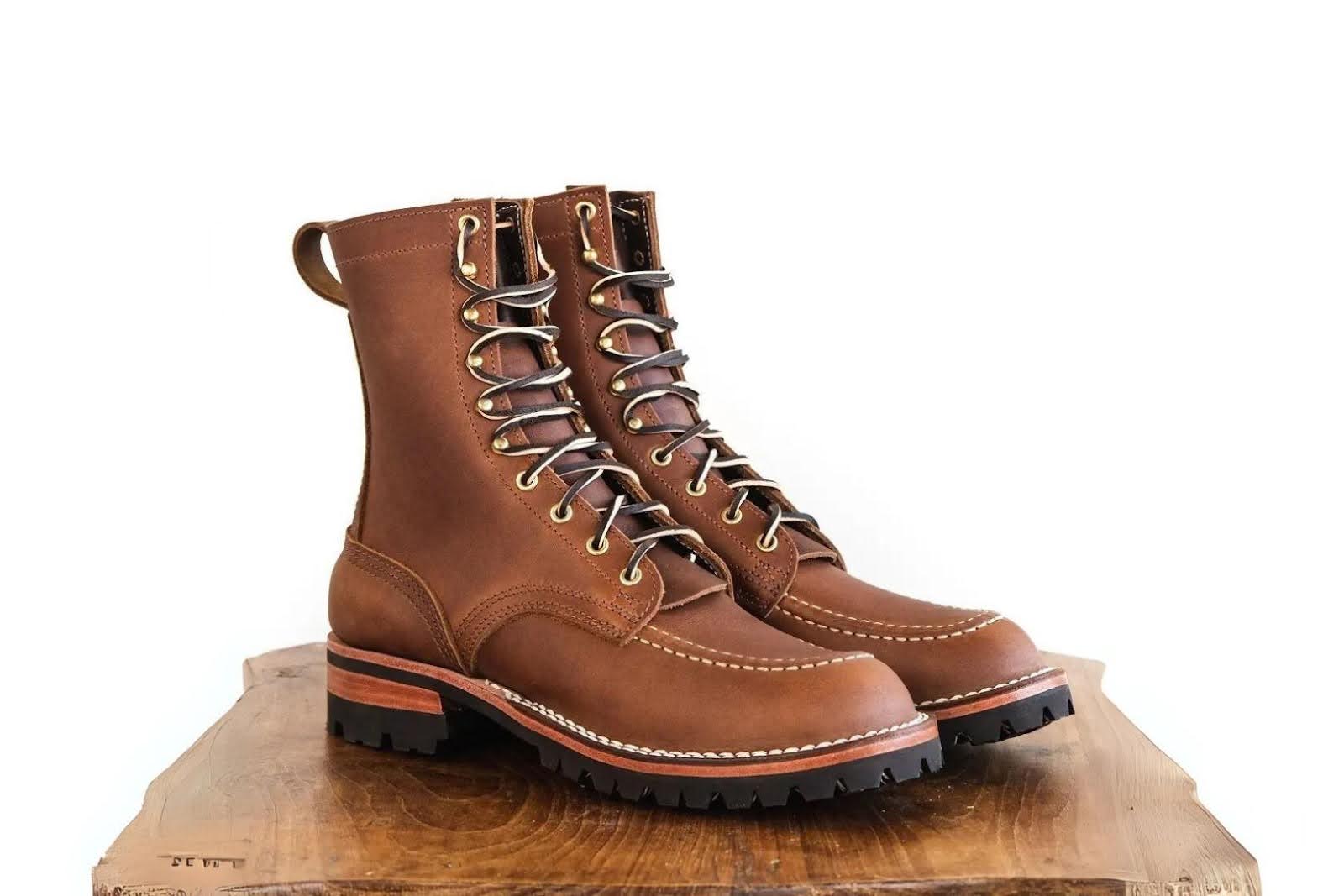
The Role Of Boot Height In Welder Safety
- Enhanced Protection Against Sparks And Spatter: Sparks and spatter are common during welding. Boots with a higher shaft protect more of the foot and leg, reducing the risk of burns and injuries.
- Increased Support And Stability: Nicks Boots taller boots provide better ankle and leg support, which is crucial for long hours of standing. They can prevent ankle injuries and improve posture, especially on uneven surfaces.
- Barrier Against Environmental Hazards: High boots shield against water, chemicals, and debris in workshops or outdoor sites, keeping the feet safe from harmful substances.
- Considerations For Comfort And Mobility: Choose boots that balance safety with comfort and mobility. Modern designs offer protection without restricting movement, ensuring comfort during long work hours.
Insulation And Heat Resistance: Key Factors
Selecting high-quality work boots for welding goes beyond just durability and comfort; insulation and heat resistance are critical factors that significantly influence the boots' effectiveness in a welding environment. These characteristics ensure that a welder’s feet remain protected against extreme temperatures, a common challenge in welding tasks. Understanding the principles and materials contributing to good insulation and heat resistance can guide welders in making informed decisions when choosing protective footwear.
Importance Of Insulation
Insulation in work boots is primarily about protecting the feet from extreme temperature variations. In welding, this doesn’t solely refer to guarding against the heat generated by welding tools and materials; it’s also about insulation from cold conditions, particularly for welders working in outdoor or unheated spaces. Effective insulation keeps the feet at a stable, comfortable temperature, preventing the discomfort that could distract a welder from work or cause cold-related injuries in colder environments.
Materials That Matter
Regarding heat resistance, the materials from which the boots are made play a pivotal role. High-quality leather is one of the best materials for welding boots due to its natural heat-resistant properties. However, the thickness and type of leather also influence its effectiveness. Full-grain leather, known for its durability and resistance to wear, offers excellent protection against heat, sparks, and minor splashes of molten metal.
Another aspect to consider is the lining inside the boot contributes to comfort and heat resistance. These materials offer protection against cuts and are highly resistant to heat. This makes these boots a preferred choice for welders who require both insulation from heat and protection from sharp objects.
Construction Techniques
How work boots are constructed also impacts their heat resistance and insulation qualities. Traditional methods using stitching can be vulnerable to sparks and high temperatures, potentially leading to the boot's structural integrity degradation over time.
Modern welding boots often incorporate welding and other advanced construction techniques to minimize seams and use heat-resistant threads, such as Kevlar ones. This ensures the boots can withstand prolonged exposure to high temperatures without falling apart.
External Heat Shielding
In addition to the material and construction of the boots, some designs include external features that offer added protection against heat and sparks. Metal guards, additional leather layers, and heat-resistant coatings can act as shields, deflecting sparks and reducing the boot's direct exposure to high temperatures. These features are particularly beneficial in heavy-duty welding operations where the risk of heat exposure is elevated.
In conclusion, insulation and heat resistance are additional features and essential criteria for selecting work boots for welding. Understanding the importance of these factors, the materials that offer superior protection, and the construction techniques that enhance these properties can significantly affect a welder's safety and comfort. By prioritizing these aspects, welders can ensure they are suitably protected against the thermal challenges that their work environment presents.

Waterproofing And Its Relevance To Welders
Waterproofing
While often overshadowed by the pressing need for heat resistance and durability, waterproofing is an essential work boot for welding features that should not be overlooked. The relevance of waterproofing extends beyond mere comfort, playing a significant role in the safety and productivity of welders, especially those working in outdoor environments or settings where exposure to liquids is common.
Hazards
Water and other liquids in welding environments can create hazards that compromise a welder's safety. Wet conditions can lead to slips and falls, one of the most common accidents in industrial settings.
Waterproof boots provide a crucial defense, keeping the welder's feet dry and reducing the likelihood of slips. This is particularly vital in outdoor welding operations where weather conditions can change rapidly, presenting unexpected challenges.
Protection
Furthermore, waterproof boots protect against more than just water. In many welding environments, welders may encounter various chemicals and oils.
Prolonged exposure to these substances can damage the boot, reducing its lifespan and effectiveness, and pose health risks if they penetrate the boot and come into contact with the skin. Boot waterproofing technology acts as a barrier, preventing these harmful substances from reaching the foot.
Advancements
Technological advances have made work boots waterproof and breathable. This combination is crucial for maintaining comfort over long periods.
Waterproof but non-breathable boots can lead to condensation from sweat inside the boot, negating the benefits of waterproofing by keeping the feet wet from the inside. Breathable membranes allow moisture from sweat to escape while preventing water from entering, ensuring the feet stay dry and comfortable, even in demanding conditions.
Material
Another aspect where waterproofing proves worthwhile is preserving the boot's material, particularly leather. When leather becomes wet and exposed to the intense heat typical in welding environments, it can dry out and crack prematurely. Waterproofing helps maintain the leather's integrity, extending the boot's life and ensuring ongoing protection for the welder.
Frequently Asked Questions
What are the best materials for welding boots?
Leather and rubber are the best materials for welding boots. Leather provides durability and resistance to sparks and hot metal, while rubber soles offer electrical and slip resistance.
How do I choose the right size for welding boots?
To choose the right size of welding boots, measure your foot length accurately and consult the manufacturer's sizing chart. You should also consider the type of socks you'll wear with the boots, as thick socks may require you to size up.
What safety features should welding boots have?
Welding boots should have several safety features, including steel or composite toe protection, puncture-resistant soles, heat resistance, electrical hazard protection, and slip resistance. These features ensure maximum protection in welding environments.
Are there waterproof welding boots available?
Yes, waterproof welding boots are available. These boots are designed with water-resistant materials or coatings that keep your feet dry in wet conditions, particularly useful in outdoor welding scenarios.
How long do welding boots typically last?
The lifespan of welding boots varies depending on the quality of the boots and the intensity of use. With proper care and maintenance, high-quality welding boots can last 1 to 2 years, even with daily wear in demanding conditions.
Can welding boots be repaired?
Depending on the extent of the damage, some welding boots can be repaired. Common repairs include resolving and fixing minor leather tears and replacing damaged eyelets. However, significant damage might require purchasing new boots.
Are composite toe welding boots as safe as steel toe?
Yes, composite-toe welding boots are as safe as steel-toe boots and meet the same safety standards for impact and compression resistance. Composite-toe boots have the advantage of being lighter and do not conduct heat, cold, or electricity.
